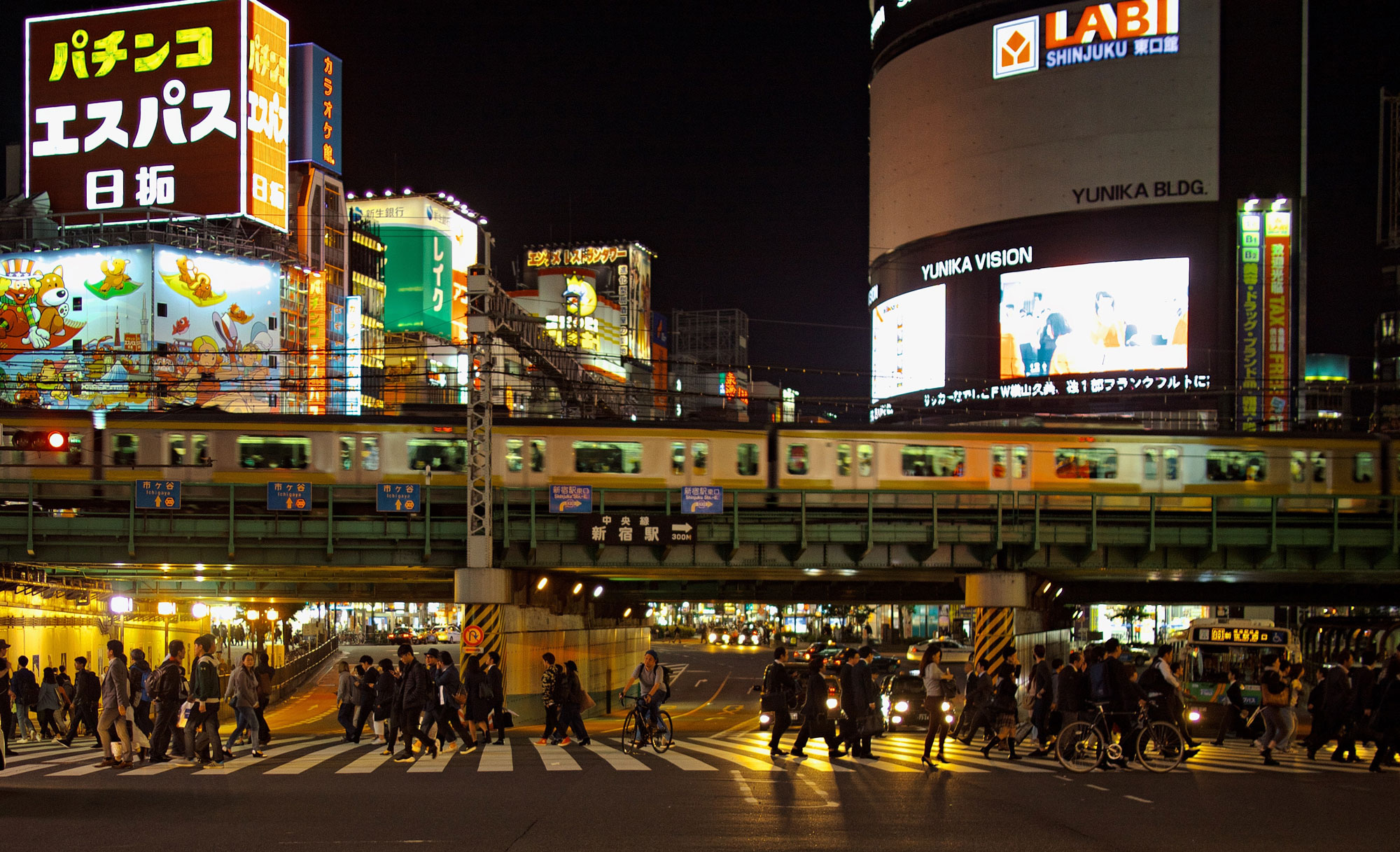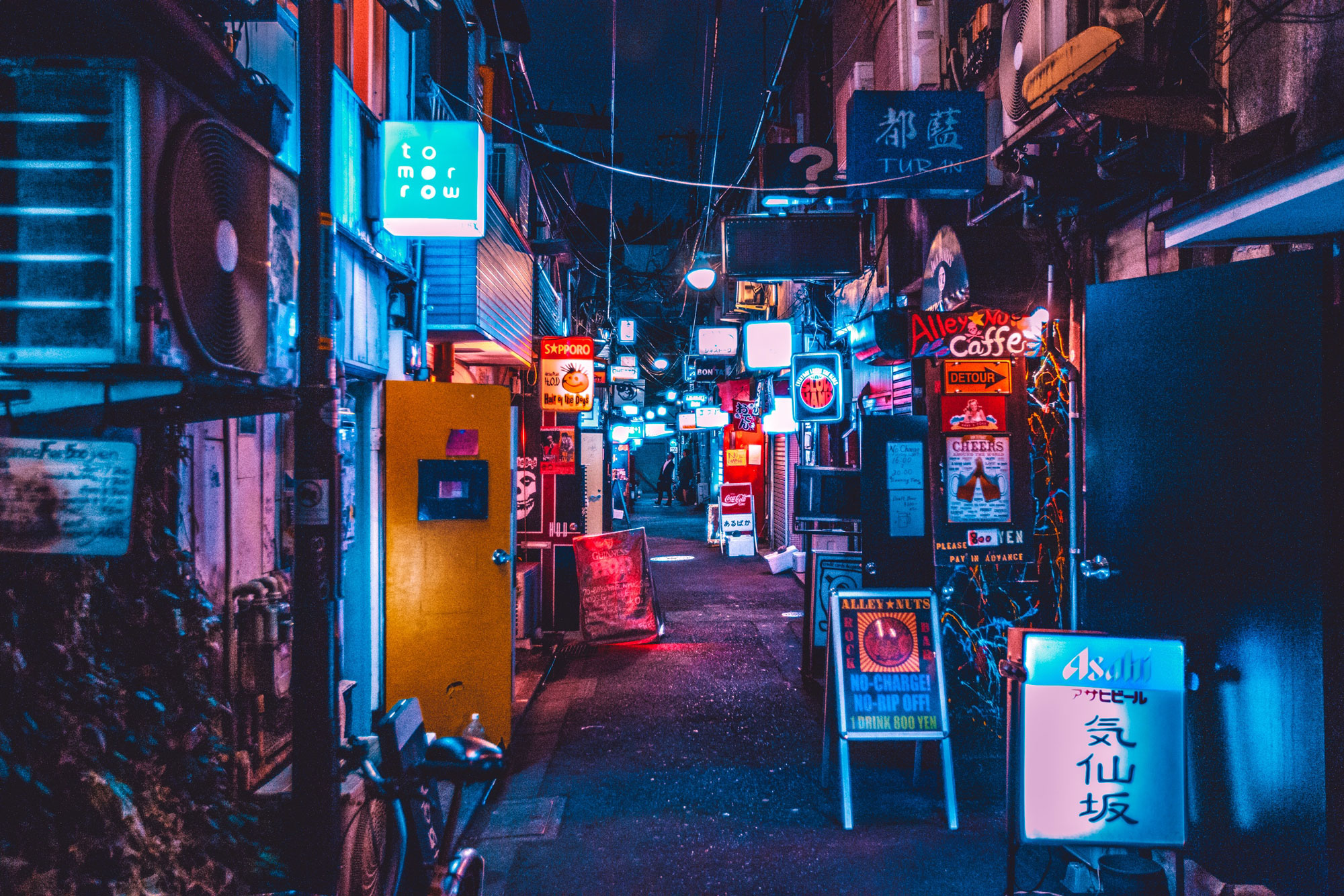Japan Travel: Shinjuku
Shinjuku

Photo credits: Sergio Rola
Shinjuku (新宿), important commercial and administrative center with the world’s busiest railway node, is part of the 23 special wards of Tokyo.
Not just trains, Shinjuku is also one of the major stops for long-distance buses. The Busta Shinjuku, a large terminal, is located right at the top of the railway station.
Taking the station as a reference point, west of it, you find yourself in the Skyscraper District. Here are located the highest buildings in Tokyo including luxury hotels and the twin towers of the Tokyo Metropolitan Government building. Designed by the famous architect Kenzō Tange, it’s here that the political and public administration of the city is handled. Its towers are 243 meters high and the observation bridges, located on the 45th floor, are open to the public for free.
Right from those observation bridges, one can see the Mode Gakuen Cocoon Tower, a skyscraper located in the financial district of Nishi-Shinjuku. 203 meters high, consisting of 50 floors with three schools inside: a fashion one (Tokyo Mode Gakuen), design one (HAL Tokyo and Shuto Ikou) and a medicine one. The architecture, also designed by Tange, gives to the skyscraper a cocoon shape created by the twisted white aluminum tubes (curtain wall) that rise diagonally.

Photo credits: Google immagini
Shinjuku is not only modernity but also houses one of the largest and most enjoyable parks in Japan: the Shinjuku Gyoen, where cherry blossoms is renowned for being among the best in the country. The park was opened to the public in 1949 after being the Garden of the Imperial family since 1903.
Shinjuku’s districts

Photo credits: Gor Badoyan
Among the most famous and discussed neighbourhoods, here is Kabukichou, located northeast of the station. It is the largest red-light district in Japan, and perhaps it is for this reason that the entrance is announced by a great red light sign. The history of this district is really curious: its name derives from a kabuki theater that was never built. Since 1872, fifth year of the Meiji Era, when laws governing relations with geishas and prostitutes were revoked in Japan, Kabukichou became the main red-lights district of Tokyo. Subsequently, laws against prostitution became stricter and after the Second World War the district was subjected to some attempts to change its image. It was then made an attempt to bring here Ginza’s Kabuki-za theater, destroyed by a fire, but eventually the theater was rebuilt in Ginza, while in Kabukicho just kept the name.
Later on, another theater was built in Kabukichou, the Koma Theater, located in a building that contains some bars and nightclubs.

Photo credits: Benjamin Hung
Kabukichou never sleeps and this area boasts numerous restaurants, bars, nightclubs, “love hotels” and a variety of red-light structures for all sexes and orientations. Walking down Kabukichou’s streets can be risky in terms of expenses. Prices are exorbitant as everything is handled exclusively by Yakuza, one of the reasons why Kabukicho is also one of the safest neighborhoods in Tokyo because there is an attentive control over the various activities. Right here, in a maze of narrow alleys we come across the Golden Gai (the Golden Street) where a series of very small and peculiar bars peek out. The seats inside are limited, 2 to 5, and may be often located in basements as well! Moving around among them, you can hear loud laughs and if you spy inside you may spot eccentric people, writers, directors and some curious tourists. These small places can also have a theme, but in each of them what you can always drink is the yamazaki, a particular Japanese whiskey.
Out of the Golden Gai, we find Ichigaya, headquarter of the Ministry of Defense. Okubo, filled with Korean stores selling traditional food and many classical gadgets of the Korean pop culture. There are also Korean-themed bars, red-lights clubs and restaurants. Shinjuku ni-chome, is Tokyo’s gay district, and finally Takadanobaba. The latter, is an area mainly frequented by students from the nearby Waseda University and Gakushuin University, there are preparatory schools and entertainments, and many bars and Izakayas. The Izakaya, consisting of the words “i” (sit down), saka (sake) and ya (shop), is a typical Japanese restaurant that sells drinks accompanied by food, a kind of pub.
The symbol of Takadanobaba is the “Big Box”, a large box-shaped building next to the station.

Photo credits: Google immagini
Sacred and profane

Photo credits: Node Reaver’s Blog
It sounds incredible, and yet it is right among Shinjuku’s skyscrapers that a space of peace and prayer opens up: the Shinto Temple Hanazono. It was founded in 1600 and is often visited by businessmen as the temple is devoted to the gods of economic success. It is almost a fundamental stop for tourists who, having walked around the chaotic Shinjuku, want to find some rest and, every Sunday, look around the antiques market. There are many festivals and religious events that take place at the Hanazono, the main one is held the last weekend of May, the Jinja Reitaisai. On this occasion there is a modest procession in which the small mikoshi is carried by the worshippers. Outside the temple 100 stands of every kind crowd the surrounding space offering a perfect interweave between sacred and profane.

Photo credits: Google immagini
Share this:
- Click to share on Facebook (Opens in new window)
- Click to share on Twitter (Opens in new window)
- Click to share on Tumblr (Opens in new window)
- Click to share on Pinterest (Opens in new window)
- Click to share on Telegram (Opens in new window)
- Click to share on WhatsApp (Opens in new window)
- Click to share on Reddit (Opens in new window)
- Click to print (Opens in new window)






